BLACK HAND: THE DEVIL HIMSELF
February 7, 2023 in News by RBN Staff
source: blacklistednews
Published: February 4, 2023
SOURCE: JOHNNY VEDMORE – UNLIMITED HANGOUT
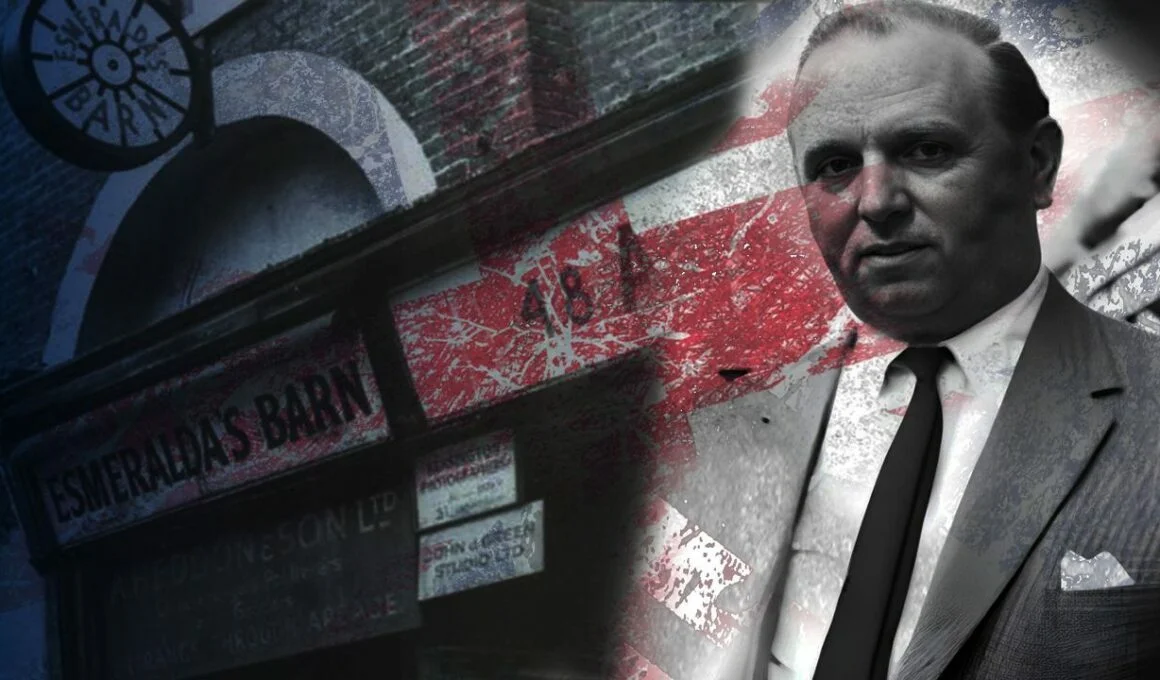
The peculiar and fascinating Horace “Hod” Dibben took over Esmeralda’s Barn within a year of Esmeralda Gullan’s tragic death. Hod’s supposed ward, Patsy Morgan Dibben, was then put in charge of the club and the Barn then became the centre of intelligence-led spy-games, gangland infiltration and an elite sex blackmail operation. Soon Patsy Morgan-Dibben would go missing, reportedly taken by the devil himself. Let’s take a look at the mad world of satanic super-spy Hod Dibben.
Patsy Morgan was a simple grocer’s daughter from Southampton, England. However, some time between the age of twelve and sixteen-years-old, she became the legal ward of a very strange and perverted individual. The evidence reveals that Patsy was groomed by a former-RAF squadron leader who later claimed to have also been a high level Satanist within a “black magic circle” based in the UK. She soon-after changed her name to Patsy Morgan-Dibben once she had become her legal guardian. This official “guardian” was a strange antique dealer named Horace “Hod” Dibben, who eventually created The Black Sheep night club in London. The Black Sheep would subsequently become a notorious haunt for some of the most famous people to inhabit the British capital’s night club scene.
Hod Dibben took control of Esmeralda’s Barn less than a year after Esmeralda Gullan’s untimely death by gassing. He then ensured that his ward Patsy Morgan-Dibben became the Barn’s next “hostess with the mostest.” Yet, like Esmeralda, Patsy would soon be out of the picture, and her fate is still unclear to this very day.
A BRIEF INTRODUCTION TO HORACE “HOD” DIBBEN
Horace Ronald Dibben was born on 15 May 1905 and was the eldest son of Mr. and Mrs. Harry Dibben of Heather Hill in Chillworth. Horace married his first wife, Phyllis D. Stent at the age of 23 years-old in a church ceremony in Havant. The Dibben family were part of the Plymouth Brethren and were affluent enough for the marriage to be reported in the 30 June 1928 edition of the Hampshire Advertiser, with the newspaper featuring a grainy picture of the happily married couple. The Hampshire Telegraph also reported on the wedding of Horace and Phyllis, stating that there were over 250 guests assembled for the wedding breakfast and the publication also noted a list of the gifts given to the bride and groom. Harry Dibben gave his son and daughter-in-law a house and a cheque, while the other members of the family gave such gifts as a Singer sewing machine and candle stands. Horace himself eventually became known as an antique dealer, amongst other things, and—in 1928—he and his blushing bride were seemingly setup for life. But a simple life was not something Hod Dibben had ever wanted, instead he aimed for a much more exciting existence. The next mention of Hod Dibben in the UK press came several years later, in July 1934, when his house in Wentworth, Southampton, was broken into and items valued at around £200 were stolen.
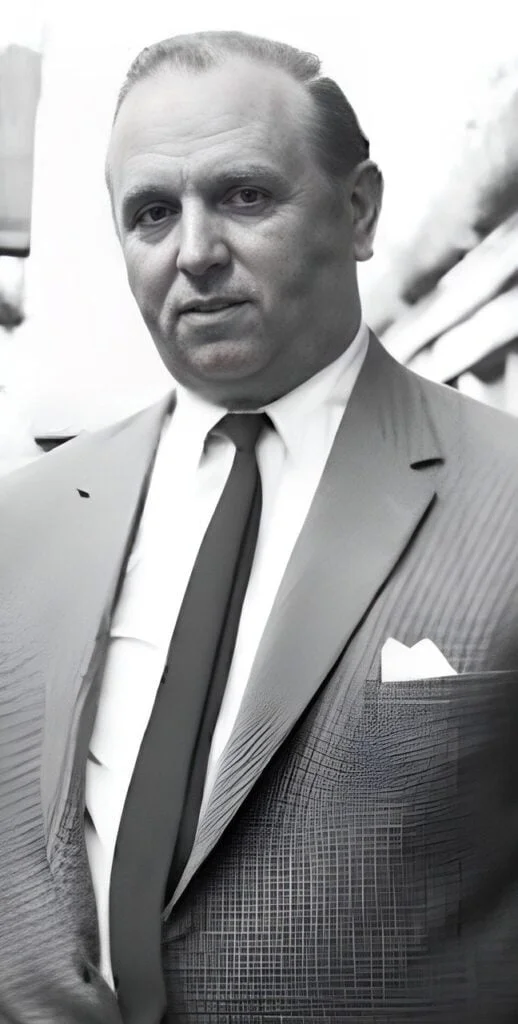
It was after the war when Horace Dibben’s profile began to rise significantly. In fact, Hod Dibben stated in an article in 1961 that, during the war, he served as a RAF officer in the Orkneys. There, he claims to have joined a black magic circle and become a practising Satanist. This weird tale gets stranger still, but we’ll return to Hod’s alleged Satanic bent soon enough; first, we must investigate the circumstances surrounding the mysterious disappearance of his young female “ward.”
Dibben claims to have decided to leave the black magic circle only a few years after he joined, a decision he says he made due to his participation in a Satanic ritual called “The Girl and the Goat”. It is during this ceremony in which Hod told newspapers that his black magic circle, in which he claimed to have once been an Elder, offered a human sacrifice; yet, he is also careful to state that the girl who was “sacrificed” was not murdered but instead wounded and forever psychologically scarred.
Dibben wrote a selection of articles for The People newspaper in the early 60s entitled; Slave of Satan; My Death Warrant; I Flee From the Vengeance of Satan’s Brotherhood; and I Cursed This Man and He Fell Dead respectively, which described the aftermath of his supposed foray into the dark arts. In the article ‘I Cursed This Man and He Fell Dead´, Dibben bombastically states:
“As a fully fledged member of that circle I had surrendered my body and soul to the worship of evil. I revelled in the wildest orgies and rituals attended by men and women equally depraved as I. Willingly I rejected goodness, honesty and purity. In their place I embraced lust and obscenity. Only after two years of this depravity, when I attended a particularly loathsome and horrible ceremony, was I jerked back to my senses and convinced that I must quit this evil cult.”
Even though this could be seen as just the ramblings of an eccentric old coot with a wild imagination, Horace Dibben played a very important part in multiple extremely high level sexual compromise operations in the near future that involved intelligence circles and powerful elements of British organized crime. One of these operations would ultimately bring down the government in the UK and would nearly do the same in the USA.
At the start of the 1950s, Hod and his first wife got divorced and, soon after, he lost most of the inheritance he was expecting from his late father’s estate. However, he still had Patsy. Hod Dibben claimed that Patsy became his ward when she was twelve-years-old, which suggests that this would have happened sometime between the start of World War II and 1940. However, other reports state that Patsy was sixteen-years-old when she came under the guardianship of Dibben, which suggests it happened after the war. This is probably much more likely. Why she agreed to this arrangement is unknown, but Horace Dibben himself described his decision to become her guardian as part of an attempt to mould her into the “perfect woman.”
Throughout the 1950s, it appeared that everything was going wrong for Hod Dibben. The Shepton Mallet Journal reported on 4 March 1955 that: “Horace Dibben, former owner of Lytes Cary Manor, Kingsdon, Somerset, and now of 24, Eaton Place, London S.W.1. was given a suspended sentence of one month’s imprisonment at Langport.” Dibben had been summoned to court for “non-payment of a fine, costs and National Health contribution arrears,” he could only avoid serving prison time by paying a fine of over £70. Over two months later, Horace Dibben’s bankruptcy was announced in the Westminster and Pimlico News with another bankruptcy notice reported by the same outlet the following year. However bad life seemed to be getting for Hod Dibben by 1956, he was still wealthy enough to buy a sizeable stake in Esmeralda’s Barn.
Hod Dibben had lost his wife, his fortune, his inheritance, and, with the reported disappearance of Patsy Morgan-Dibben, he had lost his beloved ward. It is during this period that the wild and unruly world of Hod Dibben begins its spiral towards infamy.
THE “DEVIL HIMSELF” TOOK PATSY MORGAN-DIBBEN
As previously mentioned, Hod Dibben had claimed that he became Patsy’s ward when she was only twelve-years-old, which was the reason she had taken on his surname. In a 1961 article, Dibben stated that Patsy had been: “The grocer’s daughter whom I had taken into my home and brought up with the extravagant idea of turning her into the perfect woman.” Dibben had lost his guardianship of Patsy once she had turned twenty-one and their relationship had been very strange from the off, made stranger by Horace himself. An article in the Sunday Mirror, published 28 July 1957, began rewriting Horace’s supposed history with Patsy, with the writer, Peter Hawkins, claiming that: “Patsy was a sixteen-year-old typist when she met Dibben. She answered his advertisement: “Intelligent young girl wanted for antique business.” The latter article also mentions that Horace Dibben had sent her to “an exclusive finishing school.”

By the mid-50s, Patsy Morgan-Dibben was having a very interesting career. She was just about to be installed by Hod Dibben as the hostess of Esmeralda’s Barn and she had been running a publicity agency in London’s West End. In this latter role, she represented some of the stars of the silver screen and acted as the agent for Hollywood actresses such as Zena Marshall and Jean Carson. In fact, Patsy herself was beginning to become an icon, appearing in The Sketch magazine on 19 October 1955 as it celebrated the reopening of Esmeralda’s Barn with a picture of Patsy being serenaded by Cy Grant, the Guyanese actor and musician, who sang Caribbean and folk songs in revues and cabaret venues during this period.
As mentioned in the first article of this series, Patsy Morgan-Dibben was eventually erroneously described by many as the woman who had originally created Esmeralda’s Barn, with books such as Douglas Thompson’s “Stephen Ward: Scapegoat” referring to Esmeralda’s Barn as: “A club established by Patsy Morgan-Dibben.” Under the stewardship of Patsy Morgan-Dibben and the enigmatic Hod Dibben, Esmeralda’s Barn started to become a centre for illicit activities. It was also noted in Thompson’s book that Esmeralda’s Barn during this period had regular guests such as Bill Astor and Stephen Ward. Thompson described the night club as being: “Five minutes from the American Embassy in Grosvenor Square, not much more from the Russian Embassy in Kensington Park Gardens, and a brief drive along the Embankment and a couple of lefts from Whitehall, it was convenient.” Esmeralda’s Barn’s close location to the “dead letter drop boxes”, which were being used by Soviets in Britain to pass on information they had collected to their “KGB hands-on controllers,” as Thompson terms it, made the Knightsbridge night spot a hub of Cold War activity.
Thompson also wrote that:
“Alexander Nekrassov’s father was a KGB colonel, as was his stepfather, and he spent his early life in the London Embassy. In 2013, the former Kremlin adviser and Soviet specialist told me: ‘In the late 1950s, there were many, many Russian diplomats or researchers or whatevers attached to the Embassy. They all worked for the KGB. Why else were they there? It was the Cold War, it was frenetic – the world wasn’t going to end tomorrow, it might end today. That was the environment they were working in. Every person who came to London from Moscow had a specific mission. It wasn’t to learn to make tea.’ Which wasn’t on offer at Esmeralda’s. A good time and information were.”
On Sunday 19 August 1956, the Sunday Pictorial reported on the strange disappearance of Patsy Morgan-Dibben. In an article, entitled: Night Club Girl Riddle – Earl of Warwick Answers a ‘Pic’ Call, the Sunday Pictorial reporters informed their readership about the curious tale of a missing night club hostess in a very familiar London night-spot. The piece explains: “The girl is Patsy Morgan-Dibben, 28. Six weeks ago she left Esmeralda’s Barn, the Knightsbridge club she had been running for the past year.” During this period, Patsy Morgan-Dibben had been living in a luxury flat in Eaton-place, Belgravia, along with her legal guardian, the aforementioned Horace Dibben.
Dibben would later become the organiser of black magic themed sex parties catering to certain groups of London’s elites. Many people would consider Dibben’s relationships with very young girls to be suspicious at best and paedophilic at worst, as Horace Dibben appeared to repeatedly target girls between the ages of twelve and seventeen-years-old, including well after the disappearance of Patsy Morgan-Dibben. Some of his more sinister behaviour will be fully revealed in subsequent instalments of this series, alongside some of the most bizarre real life accounts of activity within the higher echelons of this specific black magic circle, an alleged Satanic cult with some very powerful and wealthy members.
Somehow, Esmeralda’s Barn had quickly fallen into the hands of a group of very twisted characters and, only a year after the death of Esme Gullan, the hostess who had replaced the green-eyed Esmeralda had gone missing. The Sunday Pictorial reporters “took up the quest” to find Patsy Morgan-Dibben. They claimed to have called the Villa Grevillea at St. Jean Cap Ferrat, which was owned at the time by Hon. Richard Maynard Greville, who was the younger brother of the Earl of Warwick. The reporters claim to have spoken to the Earl himself and he gave a very detailed quote, with the 45-year-old stating: “Patsy left here by air on Friday morning, for Zurich I think.” Going on to talk about his younger brother, the Earl told the reporters: “I don’t exactly know where Richard is, but I think he’s touring Italy. I should think he’s with Patsy.” The Earl elaborated: “There is no mystery about Patsy’s stay here. She came several weeks ago and has been here before. She has been the guest of my brother and myself.”
Instead of saying his piece and moving on, the Earl of Warwick is quoted again:
“Whatever people might have said about this are baseless slanders. We have been friends for a long time. And this was a purely social occasion. I saw very little of her as she spent much of her time with other guests. Whatever other men friends she may have are her business and, so far as I am concerned, hers alone. Patsy is quite capable of working out her own intimate problems in her own way.”
The Earl appeared keen to quash any potential rumours, whatever they may be, before they gained any traction at all. Patsy, when put into position at Esmeralda’s Barn, had started to be described as ‘London’s newest and youngest night club owner’ and her disappearance from the popular club had obviously left many of the wealthy patrons with questions, particularly after the recent deaths of night club owners and hostesses such as Esmeralda Gullan and Barbara Knox Marsh.
The article, which goes on to make a brief mention of the club’s ‘previous owner’ Esmeralda Noel-Smith’s tragic death, also makes a very interesting mention under the subtitle “Brief note”, saying: “Before leaving suddenly she [Patsy Morgan-Dibben] told the manager, Stefan de Fey, former host of B.B.C. television’s “Cafe Continental”—“I can’t tell you why I’m going, but something exciting is to happen.” The article also notes that Patsy was known by her first name not only to the club visitors like Billy Wallace, previously mentioned artist, Pietro Annigoni, and the Duke of Kent, but also by many other stage and screen stars of the period. Patsy had reportedly left Horace Dibben a”brief note” before she disappeared.
Patsy Morgan-Dibben appeared in the newspapers on a few occasions from the time she took over Esmeralda’s Barn onwards. One extremely peculiar report from after she originally went missing was published in the Weekly Dispatch on 28 April 1957, entitled: “Ex-Major and Girl Plan ‘Chute Drop Over Pole,” started by saying: “A man who once kidnapped a German general, and a beautiful woman who has never jumped from anything higher than bar stool, are planning to parachute down to the frozen wastes of the North Pole.” The general, Mr. William Stanley Moss, who had been a war-time member of the British Special Operations Service, hopes that on Midsummer Day he will be the first to parachute over the Arctic Circle. The article quotes Miss Morgan-Dibben as saying: “I know people will think I am crazy to go. Perhaps I am, but it sounds like fun, anyway.”

By Sunday 28 July 1957, Patsy Morgan-Dibben was featured again in the Sunday Mirror with the same reporter, Peter Hawkins, who wrote: “Patsy Morgan-Dibben, the girl from a tenement who was taught the airs and graces of High society by a wealthy man, just like Eliza Doolittle in Shaw’s ‘Pygmalion,’ may now marry into society.” The rumour on this occasion was that Patsy Morgan-Dibben was due to marry into “High society” after agreeing to wed the nephew of Lord Onamore and Browne, one of the biggest landowners in Ireland. The man she was supposedly due to marry was Michael Mordaunt-Smith, who was quoted as saying: “Patsy is the most wonderful girl in the world. We discussed marriage this week – as we have done many times before. But nothing definite has yet been arranged.”
From the time Patsy Morgan-Dibben initially made front-page news after reportedly going missing, throughout the following year or so, many reports, almost exclusively from the Sunday Mirror publication, began to follow her bizarre and unverifiable adventures. Yet, it would be Horace Dibben’s own articles, written in the early 60s, that tell us some of what Patsy Morgan-Dibben may have experienced. At that time, Horace Dibben claimed that Patsy had been taken by a dark stranger, a Hungarian-born lawyer, fine art dealer, diplomat and inventor by the name of Andre Gabor Tihamer Boszormenyi, who Horace Dibben claimed: “Came to my home with a business proposition.” The business deal he sought was reportedly: “The control of a night club in Knightsbridge, Esmeralda’s Barn.” If Horace didn’t agree to Boszormenyi’s demands then he was told that he’d never see Patsy again.
THE DEVIL HIMSELF – ANDRE GABOR TIHAMER BOSZORMENYI
A young Boszormenyi was pictured hanging out amongst the elites in the US state of Florida in a picture,published in Tatler on 17 April 1935. The image shows him alongside Miss Martha Magrane, an attractive American socialite who lived part of the year in London with her mother who was described in the Bystander publication in January 1936 as a “dreamy poetess.” The latter publication on 22 May 1935 reported that: “Martha Magrane is over here for the summer with her mother, who has taken a house in Queen Anne’s Mansions as a change to North Carolina.” It also appears that Miss Magrane died the year after she was pictured alongside the intriguing Hungarian. During World War II, Boszormenyi was sent to a British internment camp under the guard of the Metropolitan Police’s Special Branch from 9 December 1941. He appealed the decision to detain him, with his appeal being refused on 9 March 1942.
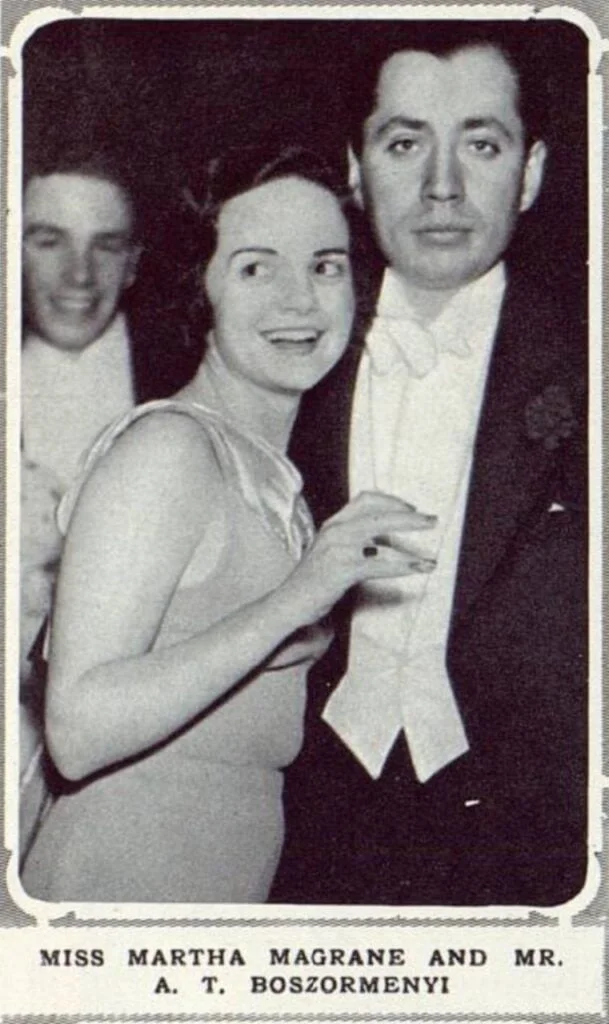
Andre Gabor Tihamer Boszormenyi was not only employed as a practising lawyer, rather, he was best known and most successful as an inventor and had various patents under his belt for pressure exchange devices in jet engines. By the 1950s, Boszormenyi was mainly working on new innovations in gas turbine technology for jet engines on behalf of Jendrassik Developments LTD, a Hungarian company which was led by György Jendrassik. Until his death in 1954, Jendrassik had also been behind the innovation of various advances in gas turbines for aircraft.
In June 1941, Germany and Hungary signed a mutual defence pact and this saw Jendrassik’s company at the time, the Invention Development and Marketing Co. Ltd., arm Nazi fighters and bombers with turbine technology such as the “turboprop Jendrassik Cs-1.” It also led to Hungarian-born men, such as Andre Boszormenyi, being sent to internment camps. Jendrassik fled Hungary for the Nazi safe-haven of Argentina after World War II with the Hungarian government website stating that he had moved because: “distrust surrounded him”. After his self-imposed exile to Argentina, Jendrassik moved to England, where he stayed until the end of his life.
Boszormenyi worked alongside Clara (spelt Klára in Hungarian) Jendrassik, a close relative of György Jendrassik, jointly registering their patents in the US, Germany, Britain, and elsewhere. All of these patents had military applications. Boszormenyi’s immigration papers to Brazil in 1950 also show that he was considered a British citizen by this time. His address was officially (and curiously) listed on those documents as being Leicester General Hospital, Gwendoline Road, Leicester.
Notably, the National Gallery in Britain also possesses correspondence between a man named Cesar de Hauke and Andre Boszormenyi concerning the purchase of the Cézanne masterpiece “La vieille au chapelet,” formerly of the Jacques Doucet collection. De Hauke was a controversial figure who had been one of the art dealers reported by the OSS Art Looting Investigation Unit in 1946, who were investigating missing artworks that had been looted by the Nazis. Even though he was obviously a suspect in the profiteering from Nazi-looted artworks, De Hauke also became friends with the famous “Monuments Man” officer, Tom How, with their relationship continuing long after World War II.
Boszormenyi was hanging around amongst the elites from very early on and his association with the powerful and wealthy continued, with the Tatler publishing a picture in 1955 of Boszormenyi with Madam Mendoza, the wife of the then-Cuban Ambassador to Spain, at the Spanish Embassy. In October 1956, a photo of Boszormenyi also appeared in the publication Sketch and shows him in conversation with the Spanish Ambassador of the period, the Duke of Primo de Rivera at a Spanish embassy reception. At this event, the daughter of Winston Churchill was also in attendance. In 1950, the illusive Hungarian lawyer, inventor, art dealer and diplomat had also been pictured alongside Don G. Nadal — the First Secretary at the Spanish Embassy.
In fact, Boszormenyi was often noted as having attended various international embassies, including the Belgian Embassy, where he enjoyed a meal alongside Lord and Lady Strabolgi, Sir Louis and Lady Grieg, Sir Richard and Lady Fairey, as well as various other members of the British aristocracy. By the 1950s, Boszormenyi was frequently travelling between London and New York, while also taking regular trips to Mexico and the Bahamas, with his name appearing on multiple passenger lists during this period.
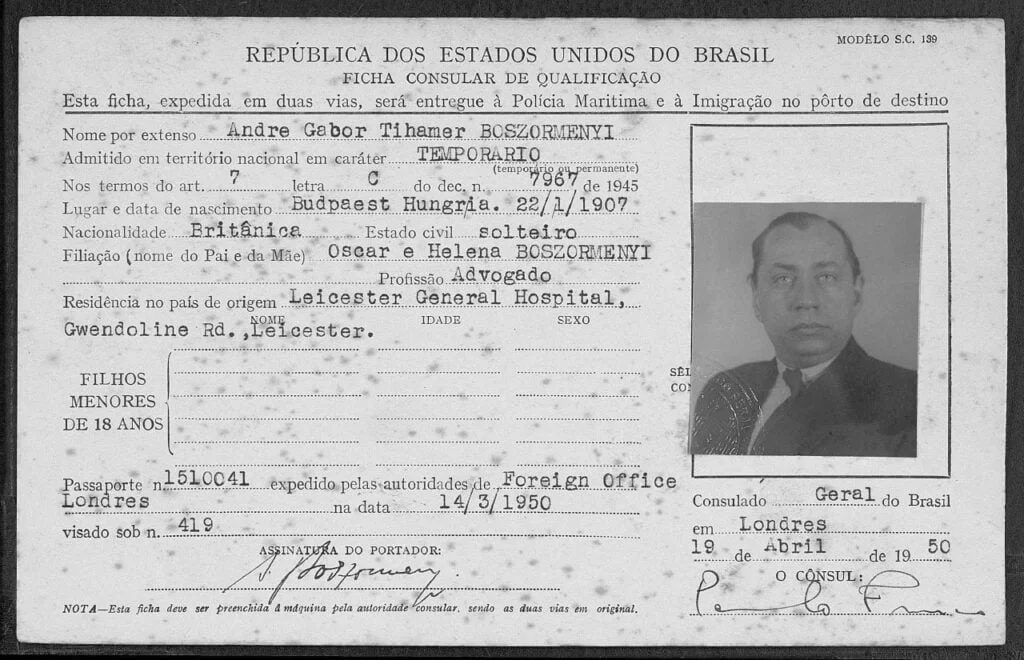
What exactly Andre Gabor Tihamer Boszormenyi was actually doing at all these different events is not completely clear. But according to Hod Dibben, he was a high ranking Satanist doing the bidding of the devil himself and he had taken Patsy Morgan-Dibben from him. However, in the end, Horace Dibben did not need to hand over control of Esmeralda’s Barn to Boszormenyi as had been demanded, after it was discovered that the unusual Hungarian had dropped dead due to a sudden heart attack at the age of 49 years-old on 6 Jan 1957.
What is also really notable concerning Andre Boszormenyi are the men who dealt with the probate for his last will and testament. One of them was Henry d’Avigdor-Goldsmid, an ex-Army man with a distinguished military career throughout World War II. More notable is the fact that d’Avigdor-Goldsmid was, soon after the death of Boszormenyi, to become the Chairman of the Anglo-Israel Bank from 1961. He would also later become the Chairman of Robert Maxwell’s Pergamon Press from 1969 until 1971, during the period when Maxwell was briefly ousted from the company.
The other man who acted as probate for the last will and testament of Andre Boszormenyi was Philip Beaumont Frere. who was married to Victoria Mary Enid Anne Frere, whose maiden name was Dugdale. Victoria Frere was a relative of the Earl of Warwick and Richard Maynard Greville who, as mentioned earlier in this story, had given an alibi as to why Patsy Morgan-Dibben had suddenly disappeared. Electoral records also show that between 1947 and 1950 Philip Beaumont Frere and Andre Boszomenyi both lived in the affluent Lincoln’s Inn Fields in London and that Boszomenyi did eventually relocate to live at 23 Down Street, which was also the residence of the aforementioned younger brother of the Earl of Warwick, Hon. Richard Maynard Greville.
One abnormal and intriguing aspect of the last will and testament of Andre Gabor Tihamer Boszormenyi was that it was not actioned within the United Kingdom and was instead sent to the Bahamas to be dealt with. On Tuesday 05 Mar 1957, The Evening Standard newspaper reported that Boszormenyi had left £31,969 after tax in his last will and testament, but the article doesn’t mention who received the inheritance.
ONLY BLACK SHEEP NEED APPLY
After narrowly avoiding giving up Esmeralda’s Barn to “the devil himself”, Horace Dibben went on to open another club in Piccadilly in an effort to court Britain’s upper-class. In a Daily Mirror article from 3 December 1959, entitled: “Only Black Sheep Need Apply,” reporter John Rolls wrote: “Antique dealer Hod Dibben is opening a smart, exclusive night club in Mayfair specially for titled and top people. It’s called “The Black Sheep” and it’s in a narrow lane just off Piccadilly.” Rolls continued: “Hod tells me: ‘I don’t want the whole social flock for my members. Just the black sheep. They are the rarest.’”
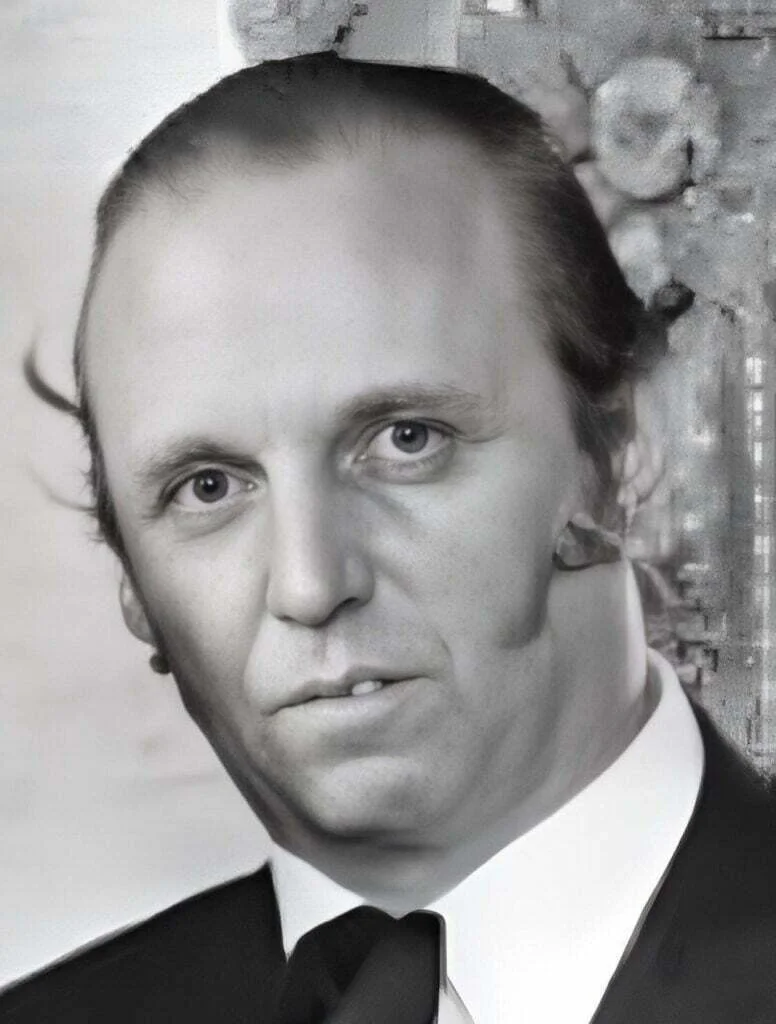
Some of the people who Dibben invited to have a free meal at the opening of his new venture were advertised as: Viscount Euston; The Earl of Coventry; Prince Shiv of Palitana; and The Earl of Warwick, as well as many other society regulars who frequented the elite drinking establishments of Mayfair, Knightsbridge and Belgravia during this period. Dibben’s business partner in the Black Sheep was Pat Steele. She was reported to have asked “everybody to the party” for the opening of the bar, even Sir Winston and Lady Churchill, the Duke and Duchess of Windsor, Maria Callas and Aristotle Onassis had been invited to the opening ceremony. However, the launch was reported as a flop, with the Evening Standard reporter who attended the event stating: “I waited for the Black Sheep’s guest-list to lengthen. It didn’t. I left.” Dibben was attempting to attract some of the most powerful people in Britain into his lair, and, at first, there didn’t seem to be much interest. But Horace’s ventures eventually attracted more powerful elites.
Like many of the other night club girls in this series, Patsy Morgan-Dibben seems to have completely disappeared. More intricate stories about Patsy living on the European continent are passed around, but, as of yet, there is no concrete first-hand evidence that she survived beyond her time at Esmeralda’s Barn.
Horace Dibben didn’t wait around for her return, as he was soon on the hunt for his next potential young female “ward.” In April 1958, playwright Henry Fielding reported for the Daily Herald, writing: “Sixteen-year-old Maureen Shelley told me last night she had received a marriage proposal from Mr. Horace Dibben, the antique dealer, who is 53. But, she says she hasn’t yet decided whether to accept. Dibben you remember, was the guardian of grocer’s daughter Patsy Morgan, whom he swept to fame as a society hostess. As Patsy Morgan-Dibben, she ran a night club which became the rage of the smart set, including the Duke of Kent.” Horace “Hod” Dibben was again trying to find a girl he could mould, model and use as he desired. The young girl in question on this occasion, described as a “shapely red-head”, told the reporter: “Mr. Dibben has met my Mummy, and we all had a talk, Mummy says it is up to me. I am thinking it over.” The young Miss Shelley had known Hod Dibben for two months before he asked for her hand in marriage. Even though she refers to Dibben as “a wonderful man”, the pair did not eventually wed.
However, the girl who was once described by the newspapers as “Pygmalion Patsy” was soon to be replaced by another, even more fascinating young lady. Dibben’s next partner and future wife was a young temptress who he’d hired to work at his Black Sheep night club and who was to stay by his side for over a decade before she, like so many other night club girls of the period, died of a reported overdose. Hod Dibben’s newest Pygmalion night club girl, however, would eventually end up in the bedrooms of other men, far beyond Britain, allegedly including then-president-elect John F. Kennedy.












